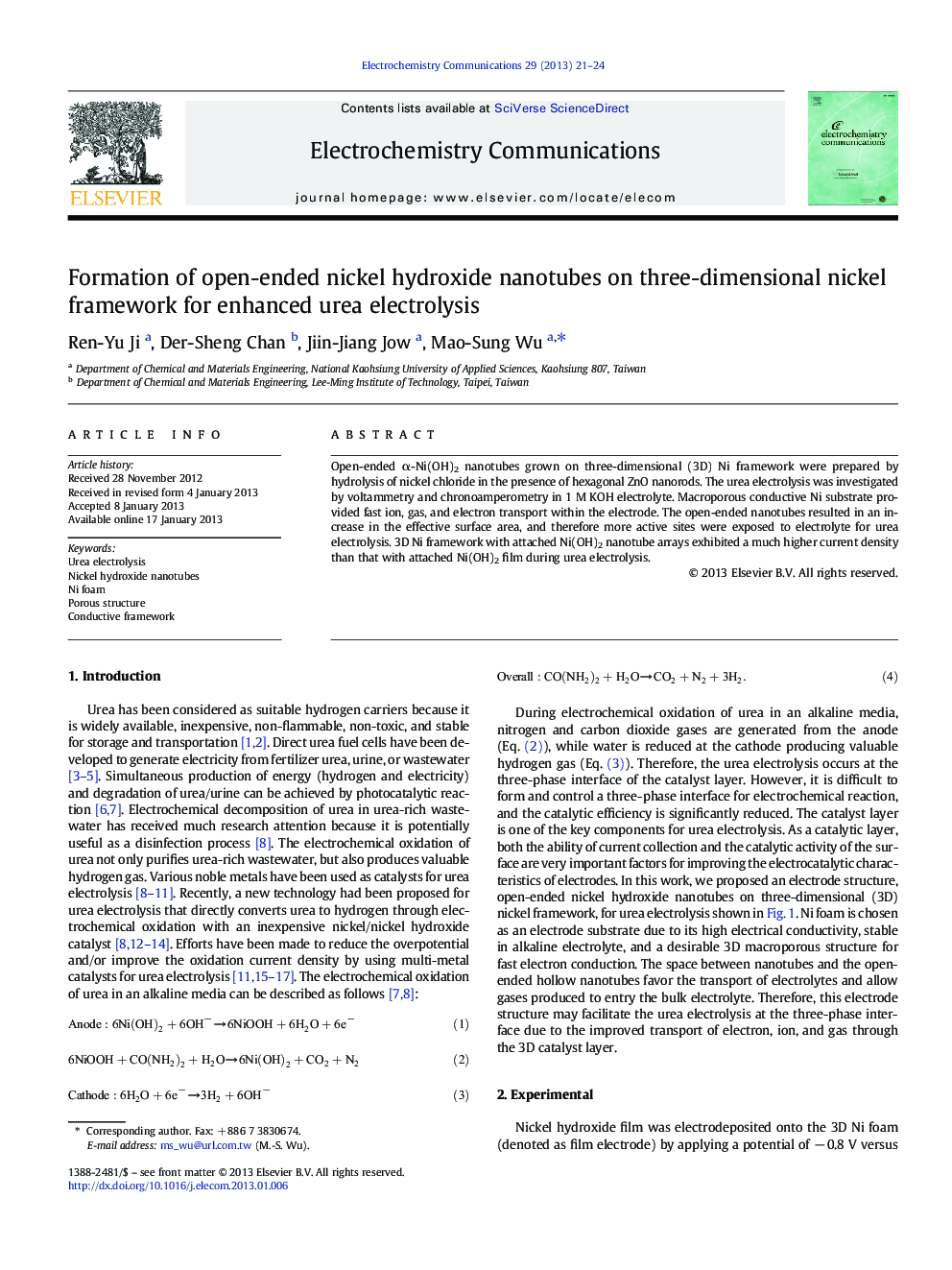| Article ID | Journal | Published Year | Pages | File Type |
|---|---|---|---|---|
| 179501 | Electrochemistry Communications | 2013 | 4 Pages |
Open-ended α-Ni(OH)2 nanotubes grown on three-dimensional (3D) Ni framework were prepared by hydrolysis of nickel chloride in the presence of hexagonal ZnO nanorods. The urea electrolysis was investigated by voltammetry and chronoamperometry in 1 M KOH electrolyte. Macroporous conductive Ni substrate provided fast ion, gas, and electron transport within the electrode. The open-ended nanotubes resulted in an increase in the effective surface area, and therefore more active sites were exposed to electrolyte for urea electrolysis. 3D Ni framework with attached Ni(OH)2 nanotube arrays exhibited a much higher current density than that with attached Ni(OH)2 film during urea electrolysis.
► 3D Ni foam with attached hollow nickel hydroxide nanotubes was fabricated. ► 3D Ni foam provides a good conductive network for electrons to travel through. ► Ni(OH)2 nanotube electrode exhibits a better performance in urea electrolysis. ► Open-ended hollow nanotube facilitates easy electrolyte transport through electrode.
